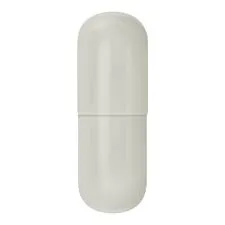
Nov . 03, 2024 13:42 Back to list
chemical structure of hpmc
The Chemical Structure of Hydroxypropyl Methylcellulose (HPMC)
Hydroxypropyl methylcellulose (HPMC) is a popular cellulose ether that holds significant importance in various industries, particularly in pharmaceuticals, food, and construction. Its unique chemical structure contributes to its diverse functional properties, making it an essential ingredient in many formulations.
HPMC is derived from cellulose, which is a natural polymer obtained from the cell walls of plants. The primary structure of cellulose consists of long chains of β-D-glucose units linked by β(1→4) glycosidic bonds. To produce HPMC, cellulose undergoes a series of chemical modifications, primarily methylation and hydroxypropylation.
The Chemical Structure of Hydroxypropyl Methylcellulose (HPMC)
Further modifications are introduced through hydroxypropylation, where propylene oxide reacts with the cellulose backbone, resulting in hydroxypropyl groups being introduced into the structure. This process compensates for the loss of solubility that might occur due to the high level of substitution with methyl groups. Hydroxypropyl groups increase the solubility of HPMC in cold water, enabling the polymer to dissolve more readily and form stable gels and coatings.
chemical structure of hpmc

The degree of substitution (DS) and the molar substitution (MS) are two critical parameters that define the properties of HPMC. The degree of substitution indicates the average number of hydroxyl groups replaced by methoxy or hydroxypropyl groups per glucose unit. These substitutions influence not only the solubility but also the thermal and mechanical characteristics of the resultant polymer. For instance, HPMC with higher degrees of substitution generally exhibits lower gel temperatures and enhanced viscosity in solution, making it particularly useful in the preparation of controlled-release tablets.
In terms of its chemical structure, HPMC exists as a linear polysaccharide with a repeating unit structure that is derived from the cellulose backbone. The presence of methoxy and hydroxypropyl groups is vital, as they create hydrophilic and hydrophobic segments within the molecule. This amphiphilic nature allows HPMC to interact with both water and organic solvents, contributing to its versatility in various applications.
In pharmaceutical formulations, HPMC is frequently used as a binder in tablet manufacturing, as a thickening agent in liquid preparations, and as a controlled-release polymer. In the food industry, it serves as a stabilizing agent in emulsions and suspensions. In construction, HPMC is utilized to enhance the workability and adhesion of cement and plaster products.
In summary, the chemical structure of Hydroxypropyl Methylcellulose is a product of the modification of cellulose, characterized by the presence of methoxy and hydroxypropyl groups. Understanding its structure is fundamental to leveraging its properties across different applications, showcasing its role as a vital ingredient in modern product formulations. Its unique balance of hydrophilicity and hydrophobicity makes HPMC an invaluable substance across multiple disciplines.
-
Versatile Hpmc Uses in Different Industries
NewsJun.19,2025
-
Redispersible Powder's Role in Enhancing Durability of Construction Products
NewsJun.19,2025
-
Hydroxyethyl Cellulose Applications Driving Green Industrial Processes
NewsJun.19,2025
-
Exploring Different Redispersible Polymer Powder
NewsJun.19,2025
-
Choosing the Right Mortar Bonding Agent
NewsJun.19,2025
-
Applications and Significance of China Hpmc in Modern Industries
NewsJun.19,2025







